Lacquerware is a kind of handicraft or daily necessities made by coating the surface of the body of an object with raw lacquer as a protective film. Lacquerware has appeared as early as the Neolithic Age to the Shang Dynasty. The earliest lacquerware unearthed in China is a wooden bowl unearthed from the Hemudu site in Yuyao County, Zhejiang Province, which is 7,000 years old (now in the Zhejiang Provincial Museum).
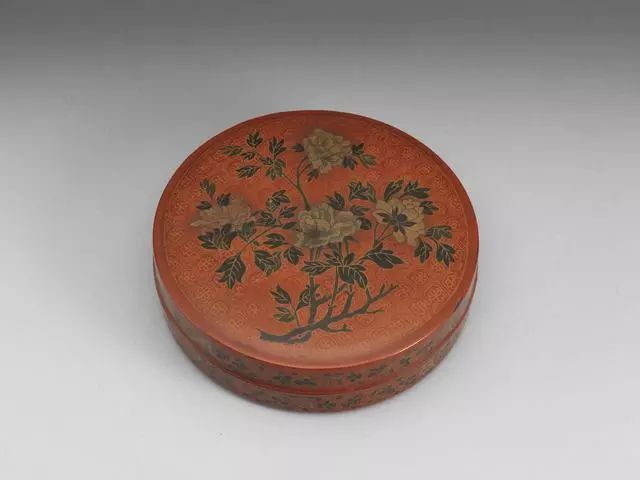
Chinese lacquerware appeared in the Neolithic period, flourished in the Han Dynasty, developed rapidly from the Wei, Jin, Southern and Northern Dynasties to the Sui and Tang Dynasties, and matured in the Song Dynasty. After the Ming Dynasty, lacquerware entered a new stage and underwent great innovations in craftsmanship. In the Qing Dynasty, it gradually declined due to the rapid development of porcelain.
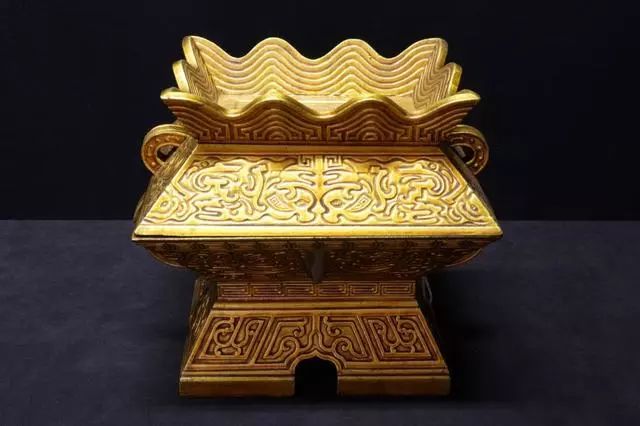
Qing Dynasty Wood Gold Lacquer Flute
Chinese lacquerware has had an important influence on neighboring countries, especially Japan, which has deeply grasped the essence of Chinese lacquerware and has been passed down to this day. Today, every household in Japan must have a set of lacquerware to use when distinguished guests visit. Japanese lacquerware is well-made and is highly sought after in the West, so much so that lacquerware (Japan) is used as the name of Japan.
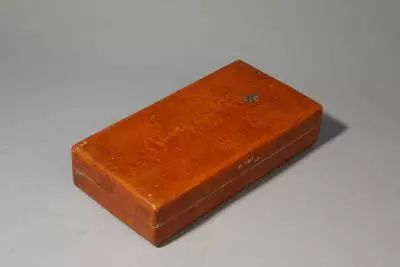
Red lacquer leather memorial box from the Qing Dynasty
After the decline of the Qing Dynasty, Chinese lacquerware gradually faded out of the lives of ordinary people. In recent years, due to the improvement of economic level, the lacquerware industry has recovered to a certain extent, and the performance of lacquerware in auctions has become more and more impressive.
In order to help collectors understand and collect lacquerware, Yuzhai has collected and compiled the top 20 Chinese lacquerware auctions for everyone today, so that everyone can use it to understand and collect lacquerware in the future.
TOP 1 Tang Jia Zhu Dry Lacquered Buddha Head Statue
Sold price: HKD 40.44 million
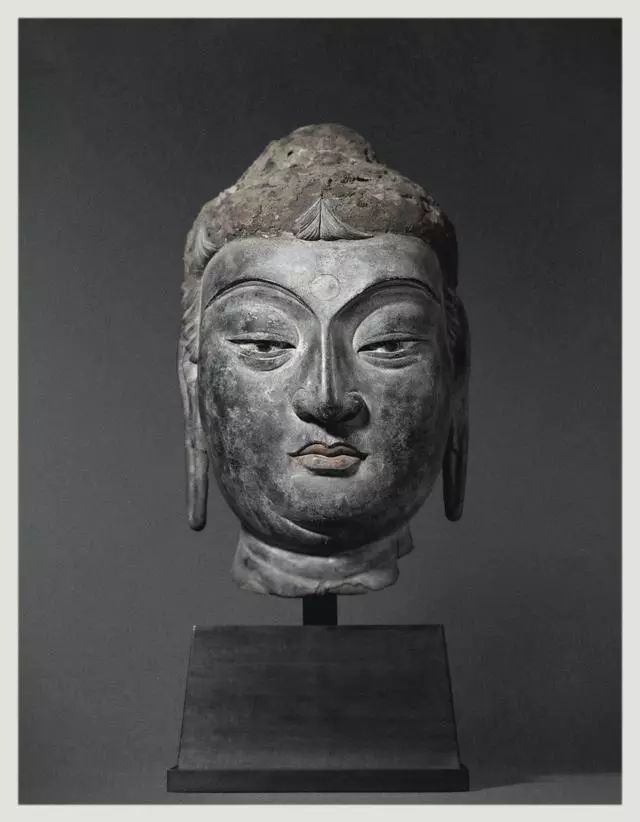
TOP2 Ming Xuande carved red carved square plate with double phoenix pattern
Sold price: HKD 16.92 million
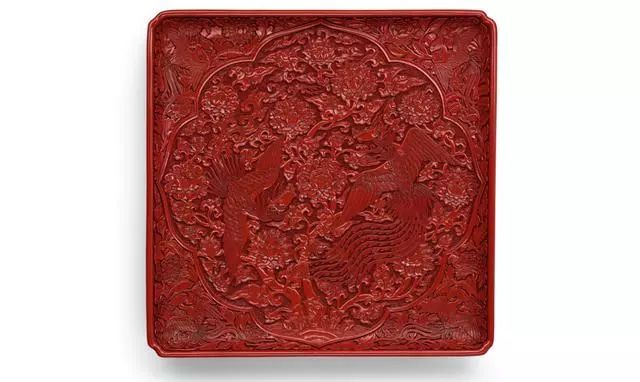
TOP3 Ming Yongle Xuande Mark Carved Red Lacquer Covered Box with Cloud and Dragon Pattern
Sold price: HKD 14.1 million
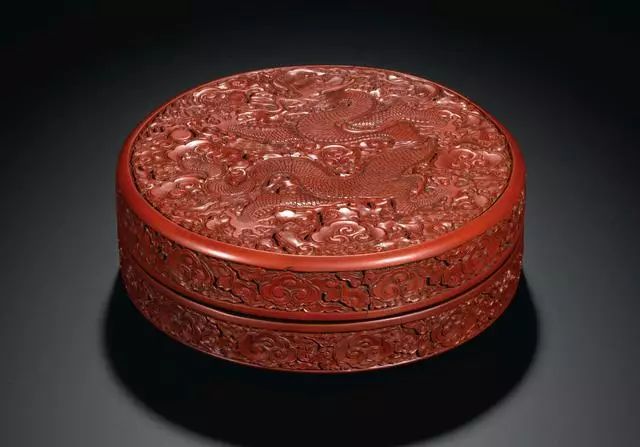
TOP4 Qing Kangxi black lacquer inlaid mother-of-pearl “Deer and Crane Celebrating Birthday” colorful butterfly, flower and fruit pattern incense table
Sold price: HKD 14.1 million
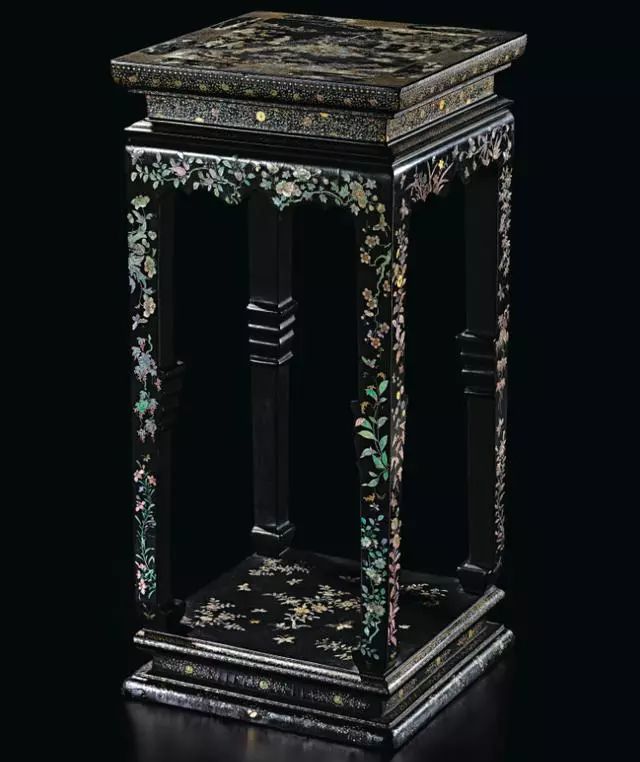
This is a high-priced lot. Sotheby’s may require customers who wish to bid on a high-priced lot to complete a pre-registration application form and pay a deposit of HK$2,500,000 or a greater amount determined by Sotheby’s and any financial proof, guarantee and/or other collateral required by Sotheby’s at its sole discretion as a guarantee for participating in Sotheby’s bidding. The BIDnow online bidding service is not applicable to high-priced lots.
TOP5 Qing Dynasty Qianlong imitation red lacquer wicker work “Fire Pearl Cloud Dragon” cover box
Sold price: HKD 12.42 million
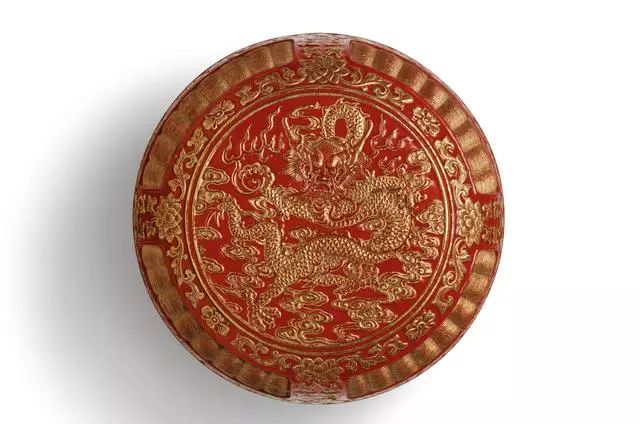
In the late Ming Dynasty, red lacquer wicker boxes were very popular, but most of them were not used by the emperor, so few of them were decorated with five-clawed dragons. This imperial imitation red lacquer wicker lidded box is skillfully decorated with auspicious dragons, which is very rare.
TOP6 Ming Yongle carved red lacquer “Peony” lidded box
Sold price: HKD 11.86 million
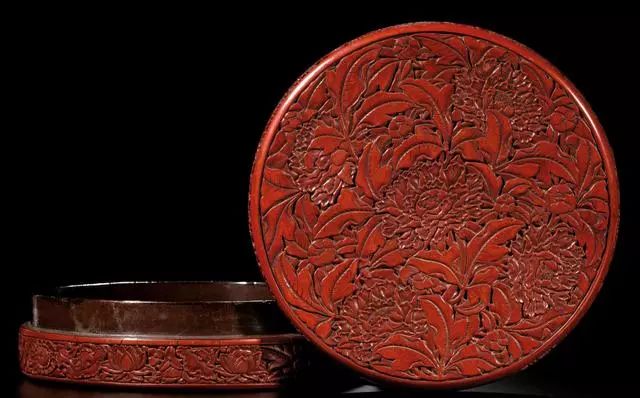
TOP7 Qing Dynasty Qianlong red lacquer chrysanthemum petal-shaped lid box with imperial poem
Sold price: HKD 10.99 million
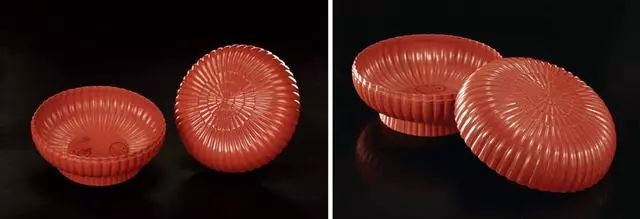
“The autumn rain is drizzling, the green moss is nourishing, and I am walking along the eastern fence today. I wonder which branch will bloom in the cold moonlight and the west wind. ” A poem written by Emperor Qianlong, “Looking for Chrysanthemums in the Rain”, expresses Emperor Qianlong’s love for chrysanthemums. Since the Song Dynasty, people have had a metaphor for the character of chrysanthemums. The indifference and aloofness of chrysanthemums are undoubtedly cherished by Emperor Qianlong, who admired the Song style. This red lacquer chrysanthemum petal box is a reflection of his cultural appeal.
TOP8 A pair of carved spring longevity cong-style boxes made by Emperor Qianlong of the Qing Dynasty
Sold price: HKD 11.34 million
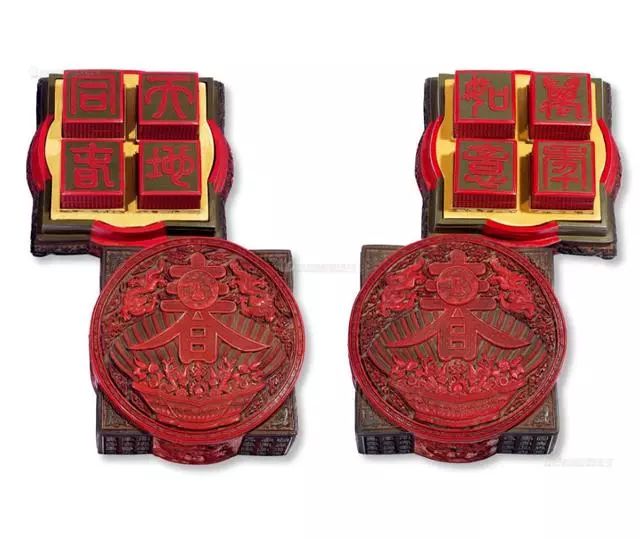
This pair of spring and longevity treasure boxes have the same shape, with the sky covering the earth, imitating the style of antique jade cong, similar to the jade cong used for worshipping the sky in ancient times, with a round inside and a square outside, and red, yellow and green colors. The cover is carved with spring and longevity treasure basin decoration, and the brocade ground is carved with a cornucopia, with thousands of rays of light coming out of the basin, and the word “Spring” on the light; the center of the upper part of the word “Spring” is decorated with a round opening, with the longevity star sitting under the pine tree, implying the meaning of spring and longevity. On both sides of the word “Spring”, dragons are carved in the sea of clouds. The four corners of the box are affixed with seal characters for longevity, totaling 96, which, together with the flower-offering birthday pictures carved on the four sides of the box, are exactly the number of a hundred years of longevity.
TOP9 Ming Yongle carved red peony pattern lid box
Sold price: HKD 8.74 million

The box is in the shape of a sugarcane segment, with yellow lacquer and red lacquer decorations carved all over. The lid is engraved with a cluster of peonies, with one in the center and five outside. The box wall is decorated with a pattern of rotating branches and leaves, with lotus, peony, camellia, and gardenia in groups of two. The inside of the lid, the inside of the box, and the bottom of the box are painted with brown lacquer. The edge of the bottom of the box is engraved with the words “Made in the Yongle Period of the Ming Dynasty”. The overall decoration is delicate and exquisite, the composition is full but not blocked, the knife technique is fluent, and the grinding is smooth, reflecting the high official level of the Yongle Dynasty.
TOP10 Ming Chenghua ochre-ground carved-color “winged dragon through lotus” rectangular basin
Sold price: HKD 8.44 million

TOP11 Qing Jiaqing imitation red lacquer gold-painted imperial poem chrysanthemum petal plate
Sold price: HKD 8.42 million
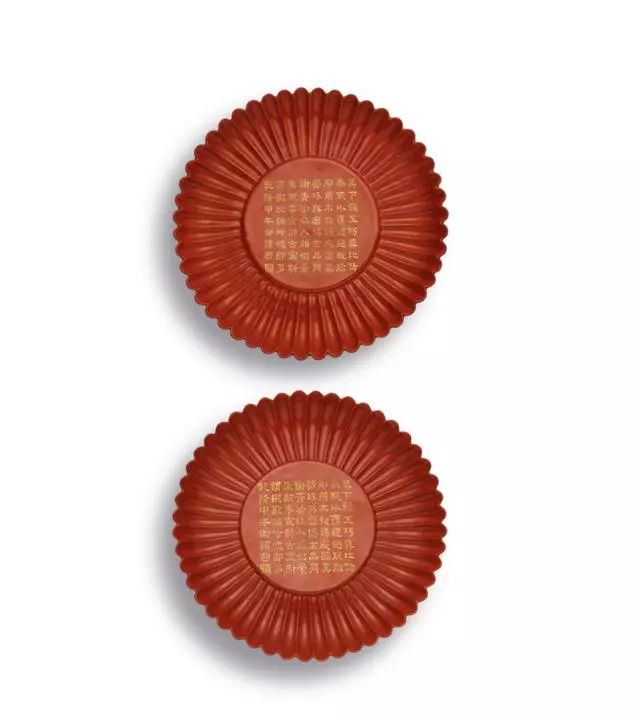
This pair of chrysanthemum-petal plates is an imitation of a Qing dynasty lacquerware, decorated with the same imperial inscription, and is very lifelike, especially the lacquer color of the foot ring is full of life, without revealing the white porcelain body. Similar lacquer carvings can also be seen on covered bowls and covered boxes. This piece is inscribed with a poem by Emperor Qianlong and is marked with the Jiaqing reign. It should have been made between the abdication of Emperor Qianlong in 1795 and his death in 1799.
TOP12 Ming Wanli carved yellow dragon pattern Japanese rectangular plate
Sold price: HKD 8.24 million
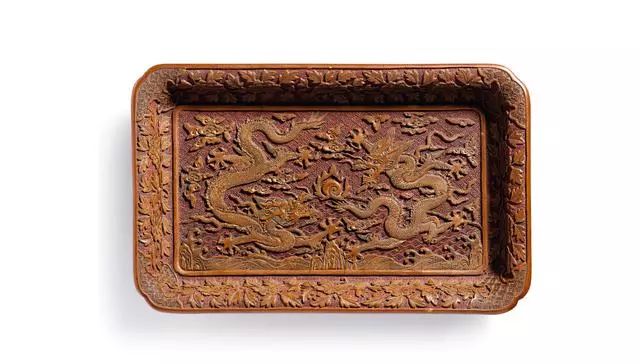
TOP13 Yuan Dynasty carved red high relief grape pattern Japanese horn plate
HKD 988 million

TOP14 Large Carved Box with a Peddler’s Painting in Jiajing Period of Ming Dynasty
Sold price: HKD 933 million
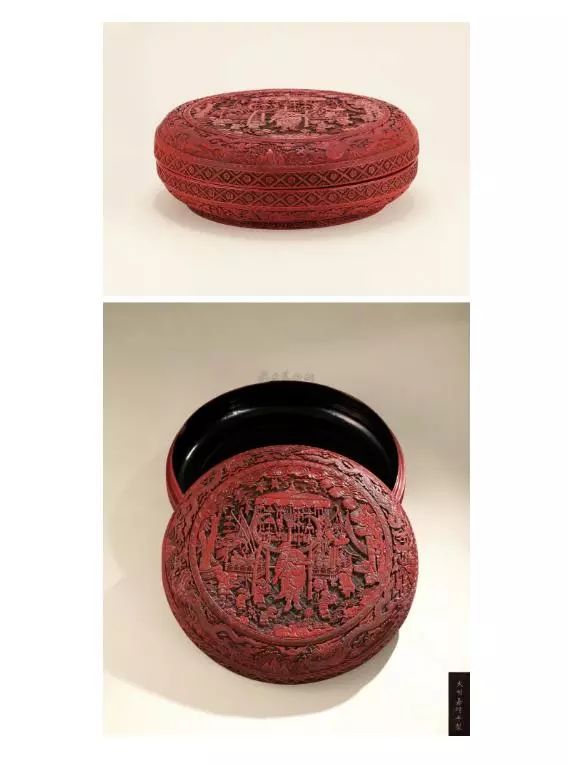
The most important achievement of Xuande lacquerware in the Ming Dynasty was the successful production of carved lacquerware. The earliest carved lacquerware that can be seen today is the Xuande carved lacquerware box with a pair of orioles and a ring. After the appearance of carved lacquerware in the Xuande period, it did not appear on a large scale until the Jiajing period. There are many handed down products, and they have achieved a high level of achievement.
This Ming Jiajing carved colored peddler lidded box cleverly applies painting themes to carved lacquerware, giving carved colored lacquerware a brand new look. The circular opening on the lid of the box is engraved with yellow lacquer on the sky and earth, and a carved “peddler picture”. In the middle is an old man holding a toy, and behind him is a peddler’s pole with toys and other things in it. Around him are eight boys playing with toys. Behind the peddler are peach trees and rocks as the background, with fresh peaches on the branches. The wall of the plate is decorated with fairy mountain cloud dragon patterns, and the upper and lower edges of the outer wall of the plate are carved with strips of falling flowers and flowing water patterns. The inside of the plate is painted with black lacquer, and the bottom is painted with ochre lacquer. In the middle is a regular script inscription filled with gold, “Made in the Jiajing Period of the Ming Dynasty”.
TOP15 Song Dynasty Carved Rhinoceros Flower Pattern Rectangular Lid Box
Sold price: HKD 7.24 million
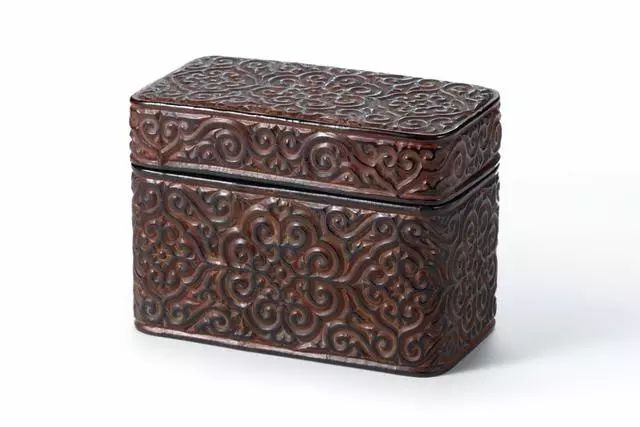
TOP16 Ming Jiajing red lacquer double dragon flying cloud longevity style box
Sold price: HKD 724 million

TOP17 Ming Yongle Emperor’s carved red box with cloud dragon chasing pearl pattern
Sold price: HKD 7.08 million

The carved red lid box is engraved with a majestic dragon, chasing a flaming pearl, and a five-clawed dragon pattern, which is particularly in the style of the Yongle Dynasty, and is exactly the same as the dragon pattern on the emperor’s dragon robe, showing the dragon’s might. This box is thickly lacquered, and the three-dimensional and ingenious patterns fully demonstrate the outstanding attainments of the imperial lacquer craftsmanship of the early Ming Yongle Dynasty. It was praised by Emperor Qianlong as the pinnacle of lacquer art.
Emperor Yongle admired arts and literature, and all kinds of crafts flourished during his reign. The imperial lacquerware workshop was set up in the Guoyuan Factory outside the Forbidden City. It was supervised by the court and brought together skilled craftsmen from all over the country, headed by Zhang Degang, the son of Zhang Cheng, a famous lacquer artist in the Yuan Dynasty.
TOP18 Qing Dynasty Qianlong carved colored Kuifeng beast face pattern double deer ears large pot
Sold price: HKD 691 million
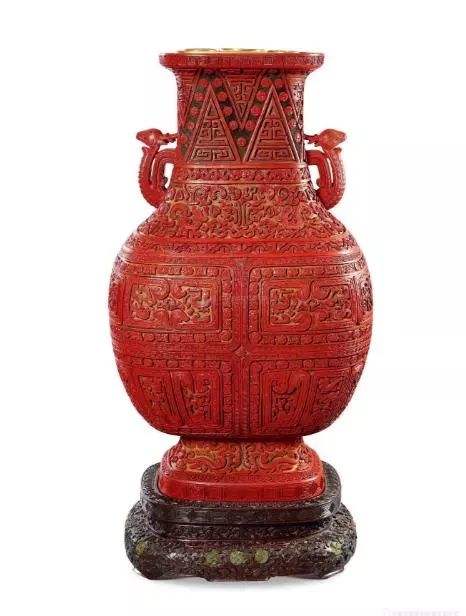
During the reign of Emperor Qianlong, various lacquerwares were meticulously crafted, richly decorated, and created a typical style of magnificence and exquisiteness. Due to the strong national strength and the active promotion of Emperor Qianlong, the production of lacquerware in the Qing Dynasty reached a peak. According to historical records, during the reign of Emperor Qianlong, the court intensively produced various lacquerwares, with hundreds of craftsmen competing for ingenuity, using materials of the highest quality and workmanship of the finest quality, creating a typical style of magnificence and exquisiteness, which had a far-reaching influence. Among them, carved lacquerware is the most complex and rarest craft in carved lacquerware. This large pot with carved lacquerware and double deer ears with Kuifeng beast face pattern is a precious and timeless example.
TOP19 Qing Qianlong red lacquer chrysanthemum petal-shaped lid box with poems
Sold price: HKD 5.28 million

The four-character seal script “Made in the Qianlong Period” is inscribed in two lines, and was made during the Qianlong reign. The box is in the shape of chrysanthemum petals, and the petals are arranged neatly. The inside and outside are painted with red lacquer, and the lacquer surface is smooth and shiny, and it looks like new over time. The inside of the foot is painted with black lacquer, and the four-character seal script “Made in the Qianlong Period” is carved with a knife and filled with gold. The seal script is surrounded by a poem by the emperor, which reads “The lacquer method was before the Ming Dynasty, and the lacquer became more and more refined. The flowers are as beautiful as chrysanthemums, and each flower is lighter than a flower.
I didn’t feel anything when I touched it, but it seemed to be affectionate. If I say that ten people have advised me, I will feel ashamed. “It is signed with “The Emperor in the Second Spring of the Bingshen Year of the Qianlong Emperor” and the seal of “Bi De”. There are four seals in the box, namely “Inspected by the Beijing Imperial Household Department”, “Inspected by the Ministry of Internal Affairs”, etc. This is an imperial item ordered by the Imperial Household Department of the Qing Dynasty from Suzhou lacquerware. The number of handed down is extremely limited. Currently, the Nanjing Museum and the Palace Museum each have the same one in their collection.
TOP20 Qing Dynasty Qianlong lacquer engraved imperial poem imitating “Zhou Si Gong”
Sold price: HKD 5.99 million
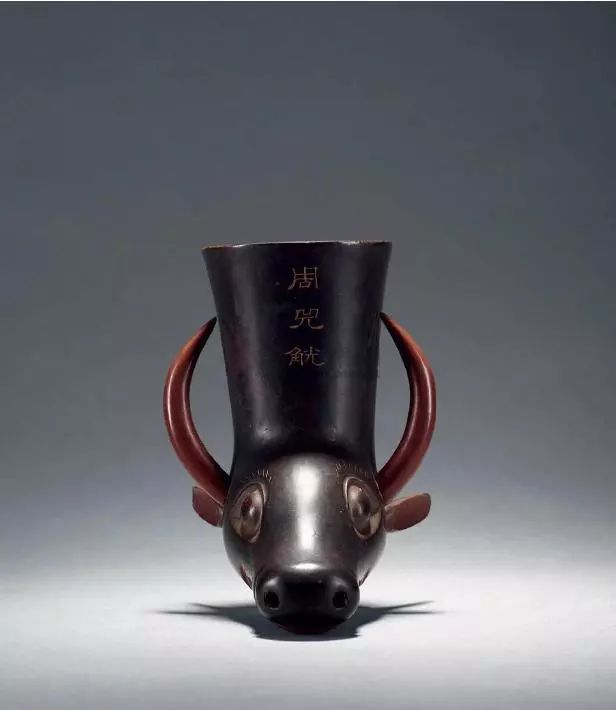
Made of lacquer, the vessel is in the shape of an ox horn and well preserved. The whole surface is plain, and the body of the vessel is engraved with poems written by Emperor Qianlong. The shape is ingenious and unique. The eyes are as big as bells, the horns are erect, the ears are spread out, and the tiger is majestic, quite like an emperor. The body of the vessel exudes a satin-like luster, and it is extremely exquisite and makes people love it. Si Gong is a ceremonial vessel used for holding wine or drinking in ancient times, or for swearing oaths between two armies and national ceremonies. Its name is often seen in the Book of Songs: “I will drink from that Si Gong.”
Bronze sigong was mainly popular in the Shang Dynasty and the early Western Zhou Dynasty. sigong also implies the good wishes of longevity. The Book of Songs, July, says: ” Enter the court, call the sigong, longevity, raise the wine cup (sigong) to congratulate each other, and the toast is “Longevity”. This vessel is dignified and majestic, but also meticulously crafted, ingeniously conceived, and exquisitely crafted. Whether it is the shape or the craftsmanship, it pursues the ultimate. The calmness contains the spirit of a hegemon, and the world accepts the emperor’s momentum. Put it on the desk, its artistic beauty makes people appreciate it, and it also shows the extraordinary mind and demeanor of the owner.
Copyright Statement: Source: Yuzhai Museum. Infringement will be deleted!
Data source:https://www.sohu.com/a/322512944_203478
